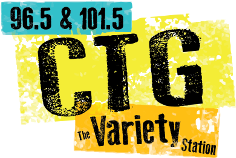Related Research Articles

HD Radio (HDR) is a trademarked term for the in-band on-channel (IBOC) digital radio technology. It is generally used to simulcast an existing analog radio station in digital format with less noise and with additional text information. HD Radio is used primarily by AM and FM radio stations in the United States, Canada, and Mexico, with a few implementations outside North America.

WTBS-LD, virtual and VHF digital channel 6, is a low-powered television station licensed to Atlanta, Georgia, United States. The station has been owned by Prism Broadcasting since 1991. The station's transmitter and antenna are located in downtown Atlanta atop the American Tower Site located at 315 Chester Avenue, Atlanta.
KSFV-CD, virtual and UHF digital channel 27, is a low-powered, Class A Jewelry Television-affiliated television station licensed to Los Angeles, California, United States. The station is owned by Venture Technologies Group, LLC, and transmits from Box Springs Mountain in northwestern Riverside County.
WZME, virtual channel 43, is the East Coast flagship station of the MeTV Plus television network, licensed to Bridgeport, Connecticut, United States and serving the New York City television market. The station is owned by Chicago-based Weigel Broadcasting. WZME's studios are located on Wakeley Street in Seymour, Connecticut, and its transmitter is located on Great Hill Road, also in Seymour.

WPTY is a rhythmic hot AC formatted station licensed to Calverton-Roanoke, New York and serving eastern Long Island. The station is owned by JVC Media LLC with studios located in Ronkonkoma, New York and transmitter located in Manorville, New York.

WTCL-LP, virtual channel 6, is a low-powered television station licensed to Cleveland, Ohio, United States. Owned by Atlanta-based Gray Television, it is a sister station to Gray's duopoly of Shaker Heights-licensed CBS affiliate WOIO and Lorain-licensed CW affiliate WUAB, as well as Canton-licensed WOHZ-CD, which serves as repeater for WOIO and WUAB in the southern part of the market. The stations share studios on the ground floor of the Reserve Square building in Downtown Cleveland; WTCL-LP's transmitter is located on West Ridgewood Drive in suburban Parma, Ohio.

WRME-LD, virtual channel 33, is a low-power Jewelry Television-affiliated television station licensed to Chicago, Illinois, United States. The station's audio channel, transmitting at 87.75 MHz, lies within the FM band; as a result, WRME-LD's audio channel operates as a radio station at 87.7 FM. Owned by Venture Technologies Group and operated under a local marketing agreement (LMA) by Weigel Broadcasting, the station airs a soft adult contemporary/oldies format via the 87.75 MHz audio channel under the brand 87.7 MeTV FM, a brand extension of Weigel's MeTV television network. The WRME-LD studios are co-located with Weigel's headquarters in Chicago's Greektown neighborhood, while the transmitter resides atop the John Hancock Center.
KNIK-LP, VHF analog channel 6, is a low-powered television station licensed to Anchorage, Alaska, United States. The station is one of very few low-power television stations that operate predominantly as a radio station by way of the fact that many FM radio receivers can tune in a VHF channel 6 television audio carrier at 87.75 MHz. This technique is made more potent due to a formerly unforeseen interpretation of deregulatory language in FCC low-power television station regulations:
Sec. 73.653 Operation of TV aural and visual transmitters.
The aural and visual transmitters may be operated independently of each other or, if operated simultaneously, may be used with different and unrelated program material.
Dance radio is a format that consists of current and recent dance and electronic music.

A broadcast relay station, also known as a satellite station, relay transmitter, broadcast translator (U.S.), re-broadcaster (Canada), repeater or complementary station (Mexico), is a broadcast transmitter which repeats the signal of a radio or television station to an area not covered by the originating station. It expands the broadcast range of a television or radio station beyond the primary signal's original coverage or improves service in the original coverage area. The stations may be used to create a single-frequency network. They may also be used by an AM or FM radio station to establish a presence on the other band.
KZNO-LD, VHF digital channel 6, is a low-powered (LPTV) Jewelry TV-affiliated television station licensed to Big Bear Lake, California, United States. The station is owned by the Venture Technologies Group. It transmits from Mount Harvard, a peak adjacent to Mount Wilson in Los Angeles County, as a Spanish-religious radio station that can be received at 87.7 FM. Its ATSC 3.0 video feed broadcasts Jewelry TV on digital channel 6.1.
KLOA-LP, VHF analog channel 6, was a low powered television station licensed to Inyokern, California, United States. Because the allocation of channel 6 in NTSC approximately within the lower fringes of the FM broadcast band, KLOA-LP took advantage of the station's audio carrier, broadcasting on 87.75 MHz, and marketed itself as a radio station. It aired a Classic Country format under the moniker "87.7 Country Gold". According to the Federal Communications Commission, television stations must operate both the audio and video carriers; however, the carriers are not required to "accompany" each other, meaning that the audio and video can operate independently of one another. This meant that KLOA-LP needed not broadcast any particular image, as long as they broadcast a video signal.

KXLI is a commercial FM radio station serving the Moapa Valley, St. George, Utah and Las Vegas areas, but focused on Las Vegas as a rimshot station. Licensed to Moapa, Nevada, it is owned by Activo Broadcasting LLC. The studios and offices are on South Eastern Avenue in Las Vegas.

Pulse 87 is an online radio station with an EDM music format. It started out as the audio feed of a channel-6 “Franken-FM” television station in New York City, audible on traditional FM radios at 87.7, before moving solely to streaming online.
WDCN-LD, VHF digital channel 6, branded on air as La Nueva 87.7, is a low-powered Spanish-language television station licensed to Washington, D.C., United States. WDCN-LD markets itself as a conventional radio station broadcasting Spanish contemporary hits.
This is a list of low-powered television stations (LPTV) in the United States transmitting on VHF channel 6 and operating as radio stations capable of being picked up by standard FM receivers. These stations are colloquially known as "Franken-FMs", a reference to Frankenstein's monster, because TV stations functioning as radio stations had not been envisioned by the Federal Communications Commission (FCC).
KXKW-LP, VHF analog channel 6, was a low-powered television station licensed to Lafayette, Louisiana, United States. The station was last owned by Delta Media Corporation. The station's primary content is the audio programming on the aural carrier of 87.74 MHz and using a 19 kHz stereo pilot carrier with 75 kHz deviation. This can be received on many FM broadcast receivers, and as a result KXKW-LP markets itself as an FM radio broadcast station. The station is airing a Regional Mexican format under the brand "Radio Lazer." To meet the legal requirements for visual content, the station runs a feed of the local National Weather Service radar. KXKW-LP's studios are located on Evangeline Thruway in Carencro, and its transmitter is located northeast of Lafayette.

KYLI is a radio station serving the Moapa Valley, St. George, Utah the stations is Licensed to Bunkerville, Nevada, The Chavez Radio Group outlet operates at 96.7 MHz with an ERP of 13 kW and broadcasts from a transmitter site near the Arizona border south of Bunkerville.
WVOA-LP, VHF analog channel 6, was a low-powered radio and television station licensed to Syracuse, New York, United States. The station, formerly known as WMBO-LP, operated a brokered religious format known as Love Radio; Love Radio had previously aired in the Syracuse area on FM 103.9, now known as WSEN. WVOA-LP operated on analog channel 6, allowing its audio feed to be heard on the FM radio dial at 87.7 MHz. To meet the legal requirements for visual content, the station ran the display from a Atari Video Music machine that the station's audio signal was fed into.

WVES is a broadcast radio station licensed to Chincoteague, Virginia, serving Chincoteague and Accomac in Virginia and Pocomoke City in Maryland. WVES is owned and operated by GSB Broadcasting.
References
- ↑ "NorthEast Radio Watch by Scott Fybush". fybush.com. Archived from the original on 2009-12-19. Retrieved 2009-11-21.
- ↑ "RadioInfo - The Music Radio Trade Publication". RadioInfo.
- ↑ "DAVID R. MALTZ & CO., INC. - Auctioneers, Appraisers, Licensed Real Estate Brokers". maltzauctions.com. Archived from the original on 2010-03-24. Retrieved 2010-02-23.
- ↑ "NorthEast Radio Watch by Scott Fybush". fybush.com. Archived from the original on 2009-08-20. Retrieved 2009-08-17.
- ↑ "Russian Radio New York 105.1 FM HD2 - Russkoe Radio - Russian Music". Danu Radio. Archived from the original on 2013-01-22. Retrieved 2013-01-08.
- ↑ "FCC letter of cancellation of WNYZ-LP, June 29, 2011". fcc.gov. Archived from the original on 2012-10-26. Retrieved 2011-07-06.
- ↑ "MEDIA BUREAU REMINDS LOW POWER TELEVISION AND TELEVISION TRANSLATOR STATIONS OF JULY 13, 2021, DIGITAL TRANSITION DATE" (PDF). Federal Communications Commission . 2020-07-13. Archived (PDF) from the original on 2020-10-18.
- ↑ https://www.youtube.com/watch?v=TDcs_1cGhZI
- ↑ http://www.koreatimes.com/article/20210712/1371114